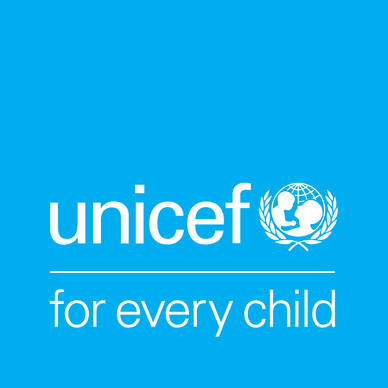New data reveal nearly 3 in 4 infants live in countries where low vaccine coverage driving measles outbreaks
15 July 2024 | Geneva/New York – Global childhood immunization coverage stalled in 2023, leaving 2.7 million additional children un- and under-vaccinated compared to pre-pandemic levels in 2019, according to data published today by the World Health Organization (WHO) and UNICEF.
The latest WHO and UNICEF estimates of national immunization coverage (WUENIC) – which provide the world’s largest and most comprehensive dataset on immunization trends for vaccinations against 14 diseases – underscore the need for ongoing catch-up, recovery and system-strengthening efforts.
“The latest trends demonstrate that many countries continue to miss far too many children,” said UNICEF Executive Director Catherine Russell. “Closing the immunization gap requires a global effort, with governments, partners, and local leaders investing in primary healthcare and community workers to ensure every child gets vaccinated, and that overall healthcare is strengthened.”
According to the findings, the number of children who received three doses of the vaccine against diphtheria, tetanus and pertussis (DTP) in 2023 – a key marker for global immunization coverage – stalled at 84% (108 million). However, the number of children who did not receive a single dose of the vaccine increased from 13.9 million in 2022 to 14.5 million in 2023.
More than half of unvaccinated children live in the 31 countries with fragile, conflict-affected and vulnerable settings, where children are especially vulnerable to preventable diseases because of disruptions and lack of access to security, nutrition, and health services.
Additionally, 6.5 million children did not complete their third dose of the DTP vaccine, which is necessary to achieve disease protection in infancy and early childhood.
These trends, which show that global immunization coverage has remained largely unchanged since 2022 and – more alarmingly – has still not returned to 2019 levels, reflect ongoing challenges with disruptions in healthcare services, logistical challenges, vaccine hesitancy and inequities in access to services.
Low vaccine coverage already driving measles outbreaks
The data further show that vaccination rates against the deadly measles disease stalled, leaving nearly 35 million children with no or only partial protection.
In 2023, only 83% of children worldwide received their first dose of the measles vaccine through routine health services, while the number of children receiving their second dose modestly increased from the previous year, reaching 74% of children. These figures fall short of the 95% coverage needed to prevent outbreaks, avert unnecessary disease and deaths, and achieve measles elimination goals.
Over the last five years, measles outbreaks hit 103 countries – home to roughly three-quarters of the world’s infants. Low vaccine coverage (80% or less) was a major factor. In contrast, 91 countries with strong measles vaccine coverage did not experience outbreaks.
“Measles outbreaks are the canary in the coalmine, exposing and exploiting gaps in immunization and hitting the most vulnerable first,” said Dr Tedros Adhanom Ghebreyesus, WHO Director-General. “This is a solvable problem. Measles vaccine is cheap and can be delivered even in the most difficult places. WHO is committed to working with all our partners to support countries to close these gaps and protect the most at-risk children as quickly as possible.”
Global HPV vaccine coverage among girls increased substantially
The new data also highlight some brighter spots in immunization coverage. The steady introduction of new and under-utilized vaccines, including for human papillomavirus (HPV), meningitis, pneumococcal, polio and rotavirus disease, continue to expand the breadth of protection, particularly in the 57 countries supported by Gavi, the Vaccine Alliance.
For example, the share of adolescent girls globally who received at least 1 dose of the HPV vaccine, which provides protection against cervical cancer, increased from 20% in 2022 to 27% in 2023. This was largely driven by strong introductions in Gavi-supported countries, such as Bangladesh, Indonesia, and Nigeria. The use of the single-dose HPV vaccine schedule also helped boost vaccine coverage.
“The HPV vaccine is one of the most impactful vaccines in Gavi’s portfolio, and it is incredibly heartening that it is now reaching more girls than ever before,” said Dr Sania Nishtar, CEO of Gavi, the Vaccine Alliance. “With vaccines now available to over 50% of eligible girls in African countries, we have much work to be done, but today we can see we have a clear pathway to eliminating this terrible disease.”
However, HPV vaccine coverage is well below the 90% target to eliminate cervical cancer as a public health problem, reaching only 56% of adolescent girls in high-income countries and 23% in low- and middle-income countries.
A recent poll of over 400,000 users of UNICEF’s digital platform for young people, U-Report, revealed that over 75% are unaware or unsure of what HPV is, underscoring the need for better vaccine accessibility and public awareness. When informed about the virus, its link to cancers, and the existence of a vaccine, 52% of respondents indicated they want to receive the HPV vaccine but are hindered by financial constraints (41%) and lack of availability (34%).
Robust local action needed to reach everyone, everywhere with vaccines
Joanna Rea, Director of Advocacy for the UK Committee for UNICEF (UNICEF UK) said: “Despite ongoing global efforts, global vaccine coverage has still not fully recovered to pre-pandemic levels. It is incredibly worrying to see that in 2023, nearly 21 million children missed out on one or more life-saving vaccines, leaving them vulnerable to life-threatening yet preventable diseases.
“We urge the new UK Government to commit to a Global Growing Up Promise so that all children, everywhere, have the right to life-sustaining vaccines. The Government can act by prioritising funding for Gavi, the Vaccine Alliance, an international organisation that aims to get vaccines to children living in the world’s poorest countries. Gavi have pledged to prioritise the most vulnerable and plans to reach a billion children in the next decade if it receives enough investment from wealthy countries including the UK.”
While there’s been modest progress in some regions, including the African region and low-income countries, the latest estimates highlight the need to accelerate efforts to meet the Immunization Agenda 2030 (IA2030) targets of 90% coverage, and no more than 6.5 million ‘zero-dose’ children globally by 2030.
The IA2030 Partnership Council calls for increased investment in innovation and ongoing collaboration. The council also recommends partners step up their support for country leadership to improve routine immunization as part of their integrated primary health care programmes, backed by robust political support, community leadership, and sustainable funding.
For more information, please contact:
UNICEF
Ranjit Kang, UNICEF UK, [email protected]
Links:
Please note – some links will not be available until the embargo lifts
Access the WHO dataset (data will be updated to reflect the new WUENIC release once embargo lifts): Global dashboardcountry profiles, and additional resources
Access the UNICEF dataset (data will be updated to reflect the new WUENIC release once embargo lifts): Overview page, Full datasets, Data visualisation, Regional data visualisation, Country profiles
Download content:
WHO photo gallery and social media content, UNICEF multimedia and immunization page
Notes to editors
About the data
Based on country-reported data, the WHO and UNICEF estimates of national immunization coverage (WUENIC) provide the world’s largest and most comprehensive dataset on immunization trends for vaccinations against 14 diseases given through regular health systems – normally at clinics, community centres, outreach services, or health worker visits. For 2023, data were provided from 185 countries.
About the Immunization Agenda 2030 (IA2030)
The IA2030 is a global strategy endorsed by the World Health Assembly aiming to ensure everyone, everywhere, at every age benefits from vaccines for improved health and well-being by 2030. It focuses on increasing vaccine coverage, equity, sustainability and pandemic preparedness while promoting life-course immunization and integrating immunization with other health services.
About WHO
Dedicated to the health and well-being of all people and guided by science, the World Health Organization leads and champions global efforts to give everyone, everywhere, an equal chance at a safe and healthy life. We are the UN agency for health that connects nations, partners and people on the front lines in 150+ locations – leading the world’s response to health emergencies, preventing disease, addressing the root causes of health issues and expanding access to medicines and health care. Our mission is to promote health, keep the world safe and serve the vulnerable.
About UNICEF
UNICEF works in some of the world’s toughest places, to reach the world’s most disadvantaged children. Across more than 190 countries and territories, we work for every child, everywhere, to build a better world for everyone.
The UK Committee for UNICEF (UNICEF UK) raises funds for UNICEF’s emergency and development work for children. We also promote and protect children’s rights in the UK and internationally. We are a UK charity, entirely funded by supporters.
United Kingdom Committee for UNICEF (UNICEF UK), Registered Charity No. 1072612 (England & Wales), SC043677 (Scotland).
For more information visit unicef.org.uk. Follow UNICEF UK on Twitter, LinkedIn, Facebook and YouTube.


